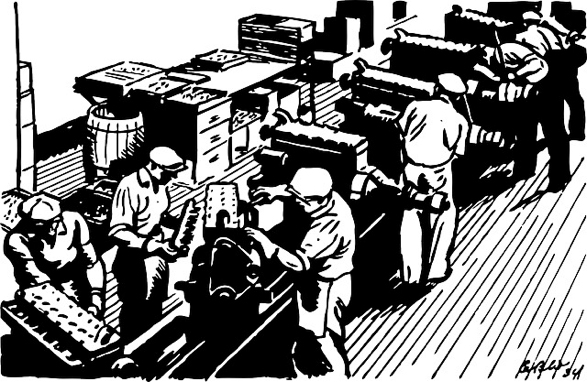
The revolution will be optimized. Traditionally, advances in manufacturing equipment efficiency have come from mechanical improvements. The next round of forward progress and manufacturing process breakthroughs will be digital. Early adopters of connected equipment systems have already shown what is possible when data collected from machines is combined with industrial workflows and enterprise applications. These are the companies who will dominate the future. For your enterprise to reap these rewards as well, you must first choose the right approach for handling your unique requirements and constraints.
The public cloud providers have created excellent technology blocks for building industrial IoT platforms. As an industrial equipment manufacturer, there’s no value to owning your own cloud infrastructure. This approach lets you create exactly the system you want. The mistake organizations make with this approach is not accounting for the upfront development requirements and ongoing maintenance costs. Public cloud services are plumbing, not product. If you have a dedicated and experienced engineering team with at least 12 months to build your solution, this may be the right approach for your organization. Otherwise you should look for alternatives.
Similar to the benefits of building your own IoT platform on public cloud infrastructure, hiring a consulting firm to build it for you provides control of your data and feature roadmap. This can be a viable option for enterprises that are creating connected product solutions to give themselves a competitive advantage. It still takes substantial time to build, and requires the consultant’s ongoing services for maintaining and updating the solution. If you lack the expertise and resources required to build your own, but have the budget and time to outsource these tasks, this may be the way to go.
These services can give you speed to deployment and basic functionality out-of-the-box. The SaaS vendor typically manages operations. For simple asset monitoring and alerting scenarios this can be a fine fit. In return, you give up control over your roadmap, your data, and your ability to meet new customer requirements. When both requirements and resources are limited, SaaS IoT platforms may connect your equipment data with the cloud. But embedding your company value in a proprietary service is unlikely to lead to transformational business success.
Sometimes all you need is a mobile application to show the status of your equipment and receive notifications when something goes wrong. Similar to the SaaS model, if your devices and scenarios are simple enough, this approach may meet your needs. For more complex scenarios, some app shops can bring in aspects of data management and business logic to your IoT application by intertwining them with the UI layer. The risk is that lack of layer isolation and API contracts mean architectural fragility. In order to change anything in your application, you risk affecting everything in your application. For multiple product lines and reports requiring backend system integration, this approach can be problematic.
Data management frameworks provide the agility and control of “build” with the speed and simplicity of “buy.” It’s a hybrid approach. An industrial infrastructure layer running inside your existing enterprise cloud and gateway devices addresses the general complexity of IoT. This is the code required for your connected product system to make use of public cloud services and collect industrial data from equipment. These components provide enterprise data management and access control, asset models, user roles, and other foundational system elements.
A smaller team, with a shorter timeline, can quickly build on top of this flexible foundation to create IoT applications for differentiating your products. Integration with CRM, ERP, and other business systems is greatly simplified, as is the ability to securely support multiple teams and customers with granular data access controls.
In the end, what matters is that you choose the right tool for the right job. With your business goals in mind, and your requirements and constraints acknowledged upfront, you should be able to narrow down the options quickly. The level of control you need and the amount of complexity that your system must handle will drive your decision, along with urgency of delivery and available budget. Integrating machine data with your own business workflows and with your customers’, partners’, and suppliers’ systems as well can optimize your entire value chain. This requires a higher level of control and flexibility, provided by only some of these options as noted previously. Within this subset, your unique combination of budget, time, and goals will inform which approach will best enable your enterprise to maintain leadership in your industry.
 About the Author
About the Author
Marc Phillips is the Director of Enterprise IoT at Bright Wolf, a leading IoT technology provider and system integrator helping Fortune 1000 companies design, develop, and deploy Enterprise IoT systems and industrial connected product solutions. Marc is an experienced director of software and business teams with a track record of building successful partnerships and delivering value through integrating both technological and human systems.
Contact info:
http://brightwolf.com
marc.phillips@brightwolf.com
919-636-9754
Scott Ellyson, CEO of East West Manufacturing, brings decades of global manufacturing and supply chain leadership to the conversation. In this episode, he shares practical insights on scaling operations, navigating complexity, and building resilient manufacturing networks in an increasingly connected world.